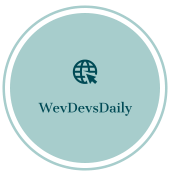The Best Programming Languages for Data Science
Data science is an exciting field where we use data to find insights and make decisions. But to do this effectively, we need the right tools. Let’s look at the most important programming languages for data science.
1. Python
Why It’s Great:
- Easy to Learn: Python has simple syntax, making it beginner-friendly.
- Powerful Libraries: Libraries like Pandas, NumPy, and Scikit-Learn make data analysis, manipulation, and machine learning easy.
- Versatile: You can use Python for web development, automation, and more, not just data science.
- Community Support: A large community means lots of tutorials, forums, and resources.
When to Use It:
- For general data analysis and visualization.
- When building machine learning models.
- For scripting and automating tasks.
2. R
Why It’s Great:
- Designed for Statistics: R is built specifically for statistical analysis and visualization.
- Rich Ecosystem: Packages like ggplot2, dplyr, and caret make data manipulation and visualization powerful and flexible.
- Interactive Data Exploration: RStudio provides a great environment for interactive data exploration.
When to Use It:
- For heavy statistical analysis and reporting.
- When you need high-quality data visualization.
- In academic and research settings.
3. SQL
Why It’s Great:
- Database Access: SQL (Structured Query Language) is used to communicate with databases.
- Data Extraction: Essential for retrieving data from large databases.
- Integration: Works well with Python and R for data analysis.
When to Use It:
- When you need to extract and manage data stored in databases.
- For combining data from multiple tables.
- Before performing further analysis in Python or R.
4. Other Languages (Julia, Scala, etc.)
Julia
- Fast: Designed for high-performance numerical computing.
- Easy Syntax: Combines the ease of Python with the speed of C.
Scala
- Big Data: Works well with big data tools like Apache Spark.
- Functional Programming: Supports functional programming, which can be powerful for certain data tasks.
When to Use Them:
- Julia: For high-performance computing tasks.
- Scala: When working with big data frameworks.
Which One Should You Learn First?
If you are new to data science, start with Python. It’s the most versatile and widely used. Once you’re comfortable, you can explore R for its statistical strengths and SQL for database management.
Choosing the right programming language depends on your specific needs in data science. Python is a great starting point, while R and SQL are excellent for specialized tasks. As you grow in your data science journey, you might find other languages like Julia and Scala useful too.
